
The Department of Mathematics Education

It has now become a rather standard exercise, with available technology,
to construct graphs to consider the equation
and to overlay several graphs of
for different values of a, b, or c as the other
two are held constant. From these graphs, discussion of the patterns for
the roots of
can be followed. For example, if we graph
for b = -3, -2, -1, 0, 1, 2, 3, and overlay the graphs, the following
picture is obtained.
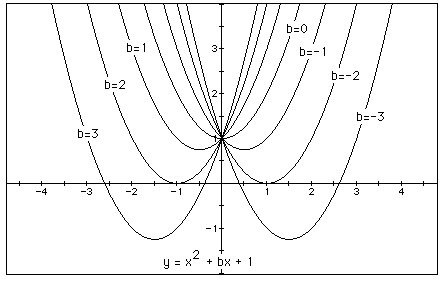
We can discuss the "movement" of a parabola as b is changed. Notice that the parabola always passes through the same point on the y-axis (at y=1), but the minimum point of each graph shifts as b changes. This affects the sign and number of roots.
Since the slope of a horizontal tangent line is zero, we can set the
derivative equal to zero, and solve for x.
We can calculate our y-coordinates using:

Plotting these points shows that the locus is the parabola
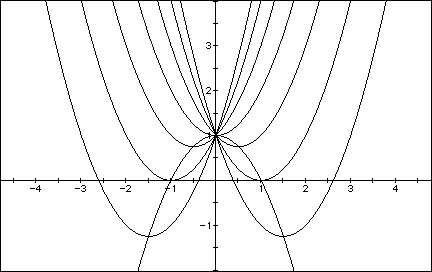
The locus of the parabola can be found by substituting
into the equation:

the locus is the parabola
When we graph this relation in the xb plane, we get the following graph:
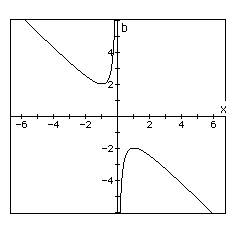
If we overlay the line b = 3 , we can use this to determine the
roots of the parabola. If the line intersects the curve in the xb plane,
the intersection points correspond to the roots of the original equation
for that value of b. We have the following graph:
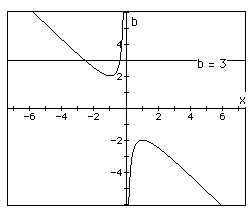
For each value of b we select, we get a horizontal line whose
intersection correlates with the signs and number of roots for varying values
of b. It is clear on a single graph that we get two negative real
roots of the original equation when b > 2, one negative real root when
b = 2, no real roots for -2 < b < 2, one real root when b = -2, and
two positive real roots when b < -2.
If the equation is graphed in the xc plane, it is easy to see that the
curve will be a parabola. For each value of c considered, its graph
will be a line crossing the parabola in 0, 1, or 2 points -- the intersections
being at the roots of the orignal equation at that value of c. The
graph of c = 1 is shown.
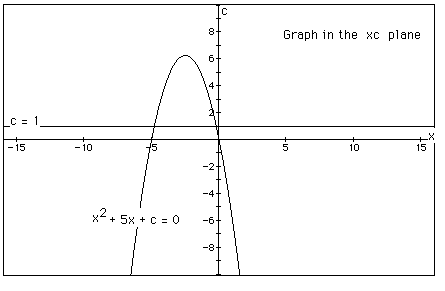
The real roots are the x-values of the intersection of c = 1 and:
Graphing the equation in the xa plane, we can find the roots for various
values of a.